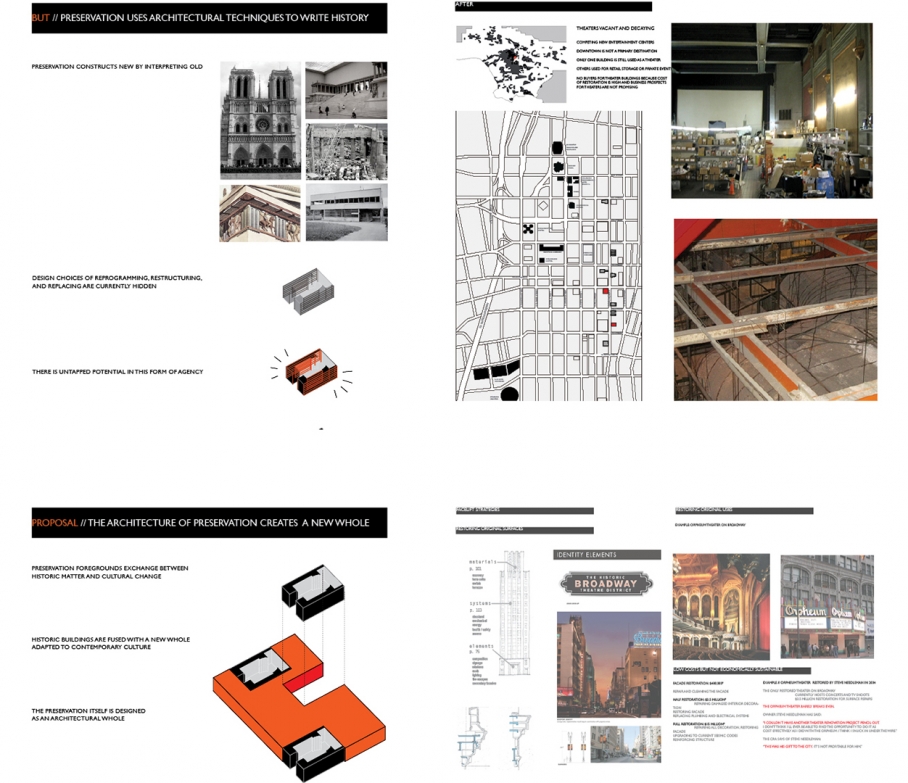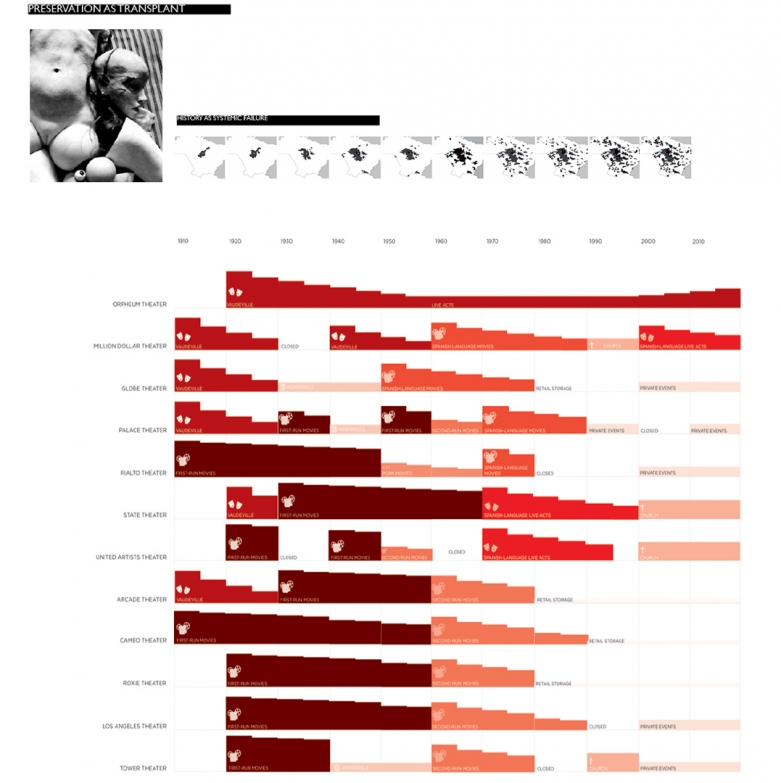Bryony Roberts
M.Arch Thesis Spring 2011
Faculty Advisor: Guy Nordenson & Lucia Allais
Project Title: “Preservation Inside-Out”
To whom does history belong?
The act of preservation raises the question: whose property is history? Do the individual property rights of a building owner extend to its past? Historic buildings are caught between two owners, and preservation must negotiate between them. My thesis proposes that claiming the agency of preservation as design can offer better solutions for activating historic buildings to serve contemporary publics.
Current preservation policies take a facelift approach, which tries to return a building to a specific historic moment. Local preservation committees regulate the facade and typology of a building to maintain its state at a past moment of apogee. But as with plastic surgery these practices are but a vain attempt to turn back time: they isolate the building from urban change, foster obsolescence, and promote paralysis.
I propose instead a transplant-and-graft approach, which embraces preservation as design. Preservation is architecture; it wields an interpretation of history to guide the deployment of new structural systems, programming and materials. The grafting approach analyzes diachronic, systemic issues that have caused decline, and then splices historic buildings and hooks them up to new systems that will give them life. This strategy creates a new whole, which embraces the exchange between the building and the current city, and provides structural and economic stability.
For this thesis, I am transplanting twelve historic theaters on Broadway in Los Angeles that are currently vacant and derelict. I am dismantling the historic interiors, which are embedded in vacant, multi-use buildings, and aggregating them on a site on the same street closer to Bunker Hill. This process requires cutting the interiors into slices and then mounting those slices onto precast concrete modules that will provide them with structural stability, and enable new architectural aggregations. The aggregations form a mediatheque, which transforms the theater typology to reflect contemporary entertainment experiences.
Within each of the main programs - Cineplex, Multimedia Performance, New Media Exhibitions, Retail, and Media Library - the permutations of the theaters create an oscillation between a state of distraction and of focused attention. This architecture embraces the distraction that surrounds mobile entertainment, but uses the historic theaters to make moments of enclosure and illusion within that field.





